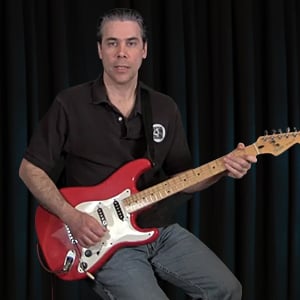You Have Reached A Full Access Section
Get full access
Practicing Minor Triads & Inversions Series 1
Description
In this tutorial we will use a backing track to systematically practice minor triad chords and their various inversion shapes on the E, A and D strings. Among the goals of this tutorial are integrate the theory of chord voicings and voicing motion with practicing and visualizing the specific shapes of triad chord inversions.
Lesson Info

Instructor
Christopher Schlegel
- Styles:
- Any Style
- Difficulty:
-
- Files
- Videos / Score
- Published
Contents
- Introduction
- Root Position Triads
- Root Position Triads With Backing Track
- First Inversion Triads
- First Inversion Triads With Backing Track
- Second Inversion Triads
- Second Inversion Triads With Backing Track
- Close Harmony Voice Motion
- Close Harmony Version 1 With Backing Track
- Close Harmony Version 2
- Close Harmony Version 2 With Backing Track
- Close Harmony Version 3
- Close Harmony Version 3 With Backing Track
- Using All The Voicings!
- Using All The Voicings With A Backing Track
- Conclusion